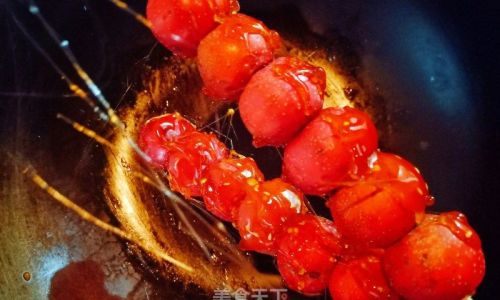Introduction: The Enigma of Stinky Tofu and Its Sauce
Stinky tofu, a fermented tofu dish renowned for its pungent aroma and addictive flavor, is a culinary icon across East and Southeast Asia. While the tofu itself undergoes a meticulous fermentation process, the sauce served alongside it is equally pivotal in elevating the dish from “stinky” to sublime. This article delves into the intricate art of crafting the perfect stinky tofu sauce, a condiment that balances umami, spice, acidity, and depth. Whether you’re a novice cook or a seasoned chef, this guide will equip you with the knowledge to create a sauce that tantalizes taste buds and honors tradition.

The Foundations: Understanding Stinky Tofu Sauce
Stinky tofu sauce is not a monolithic recipe but a canvas for regional and personal interpretation. Its core purpose is to complement the tofu’s fermented funk with layers of flavor. A typical sauce combines fermented ingredients, aromatics, spices, and acidic elements to create a harmonious, tongue-tingling experience. The sauce’s complexity lies in its ability to contrast yet enhance the tofu’s intensity.
Key Ingredients and Their Roles
To master the sauce, one must first understand its components. Below is a breakdown of essential ingredients, their functions, and substitutions for accessibility:
1 Fermented Bean Curd (Chou Doufu)
Fermented bean curd, also known as chou doufu or fermented tofu, is the sauce’s soul. Made by preserving tofu in brine with rice wine, salt, and seasonings, it imparts a savory, cheesy umami note. Opt for red fermented bean curd (spiced with chili) or white (milder) based on your spice preference.
Substitutions: If unavailable, use miso paste (white or red) or vegan fish sauce for umami, though the flavor profile will differ.
2 Chili Paste or Fresh Chilies
Chilies provide heat and vibrancy. Chinese chili bean paste (doubanjiang), Sichuanese broad bean chili paste, or fresh bird’s-eye chilies are traditional choices. Adjust the quantity to control spiciness.
Substitutions: Gochujang (Korean fermented chili paste) or harissa can add a unique twist.
3 Aromatics: Garlic, Ginger, and Shallots
These form the sauce’s fragrant base. Garlic offers pungency, ginger adds warmth, and shallots contribute sweetness. Mince them finely or use a mortar and pestle for a rustic texture.
Substitutions: Garlic powder or ginger juice can work in a pinch, but fresh is ideal.
4 Vinegar: Black, Chinkiang, or Rice Vinegar
Acidity cuts through the sauce’s richness. Chinkiang vinegar, a black rice vinegar from China, is preferred for its smoky-sweet tang. Rice vinegar or apple cider vinegar are acceptable alternatives.
Substitutions: Avoid distilled white vinegar, as its harshness can dominate.
5 Sweeteners: Sugar, Honey, or Molasses
A touch of sweetness balances the sauce’s saltiness and heat. Rock sugar, brown sugar, or honey are traditional. Molasses adds depth but should be used sparingly.
Substitutions: Agave syrup or maple syrup for a vegan option.
6 Broth or Water
A liquid base thin the sauce to your desired consistency. Vegetable or chicken broth enhances flavor, while water keeps it neutral.

7 Optional Add-Ins
- Sesame Oil: For nutty richness.
- Sichuan Peppercorns: Toasted and ground for a citrusy, tingling sensation.
- Cilantro or Scallions: Fresh herbs for garnish.
- Fermented Black Beans: For extra umami.
Step-by-Step Preparation Guide
1 Preparing the Aromatics
Begin by mincing 4 garlic cloves, a 1-inch piece of ginger, and 2 shallots. For a smoother sauce, pound them into a paste using a mortar and pestle. This step releases essential oils, intensifying the flavor.
2 Sautéing the Base
Heat 2 tablespoons of neutral oil (peanut or vegetable) in a pan over medium heat. Add the aromatics and sauté until fragrant (1-2 minutes). Avoid browning, as it can introduce bitterness.
3 Incorporating Fermented Bean Curd
Mash 2-3 cubes of fermented bean curd (red or white) with their brine into the pan. Stir continuously to combine, allowing the brine to reduce slightly (2-3 minutes).
4 Adding Chili and Spice
Introduce 1-2 tablespoons of chili paste or fresh chilies. Adjust based on your heat tolerance. For Sichuan-style sauce, add 1 teaspoon of toasted Sichuan peppercorns at this stage.
5 Balancing with Acidity and Sweetness
Deglaze the pan with 2 tablespoons of vinegar, scraping any caramelized bits. Stir in 1 teaspoon of sugar (or sweetener) to mellow the edges.
6 Thinning and Simmering
Pour in ¼ cup of broth or water, stirring to achieve a pourable consistency. Simmer for 5-7 minutes to meld flavors. Taste and adjust seasonings—add more vinegar for tang, sugar for balance, or chili for heat.
7 Final Touches
Remove from heat and stir in 1 teaspoon of sesame oil. Garnish with chopped cilantro or scallions if desired. Let the sauce cool before serving.
Regional Variations and Customization
Stinky tofu sauce varies wildly by region, reflecting local palates and ingredients:
- Taiwanese-Style: Sweet and tangy, with rice vinegar, sugar, and a hint of five-spice powder.
- Sichuan-Style: Fiery, numbing, and aromatic, with Sichuan peppercorns and doubanjiang.
- Shanghai-Style: Milder, with a focus on fermented bean curd and minimal spice.
Customize your sauce by:
- Adjusting Spice: Use fresh chilies for fresh heat or dried chili flakes for smokiness.
- Texture: Blend the sauce for a smooth consistency or leave it chunky.
- Dietary Needs: Substitute soy sauce with tamari for gluten-free options.
Troubleshooting Common Issues
- Sauce Too Salty: Balance with a splash of vinegar or a pinch of sugar.
- Lack of Depth: Add a teaspoon of fermented black beans or mushroom powder.
- Overly Spicy: Dampen heat with coconut milk or a dollop of yogurt (if not vegan).
- Thin Consistency: Simmer longer to reduce or thicken with a cornstarch slurry.
Serving Suggestions and Pairings
Stinky tofu sauce is traditionally paired with deep-fried, steamed, or grilled tofu. However, its versatility shines in:

- Dipping Sauce: For dumplings, spring rolls, or roasted meats.
- Marinade: Toss with tofu or vegetables before roasting.
- Noodle Topping: Drizzle over cold sesame noodles or rice cakes.
- Stir-Fry Base: Use as a flavor bomb in vegetable or meat stir-fries.
Storage and Shelf Life
Store the sauce in an airtight container in the refrigerator for up to 2 weeks. For longer preservation, freeze in ice cube trays for single-serving portions. Avoid cross-contamination by using clean utensils.
Health and Nutritional Considerations
While stinky tofu sauce is high in sodium, it offers probiotics from fermented ingredients and antioxidants from chili and garlic. Moderation is key, especially for those with hypertension. Opt for low-sodium soy sauce or reduced brine fermented bean curd to lower salt content.
Cultural Significance and History
Stinky tofu’s origins trace back to China’s Qing Dynasty, where it was a byproduct of tofu preservation. The sauce evolved as a means to make the pungent dish more palatable, blending peasant ingenuity with culinary artistry. Today, it symbolizes bold flavors and culinary adventure, transcending cultural boundaries.
Frequently Asked Questions
Q1: Can I use store-bought stinky tofu sauce?
While convenient, homemade sauce allows customization. Store-bought versions often lack the depth of fresh ingredients.
Q2: How spicy should the sauce be?
Start with 1 tablespoon of chili paste and adjust to taste. Remember, heat intensifies as the sauce sits.
Q3: Can I make the sauce without fermented bean curd?
The flavor will differ, but miso or vegan fish sauce can approximate umami.
Q4: How long does the fermentation process take?
The sauce doesn’t require fermentation; it’s ready immediately. However, refrigerating it overnight enhances flavor fusion.
Q5: Is stinky tofu sauce gluten-free?
Most recipes are, but check labels for soy sauce or fermented bean curd. Use tamari for gluten-free assurance.
Conclusion: The Alchemy of Flavor
Crafting stinky tofu sauce is an exercise in balance—harmonizing pungency, spice, sweetness, and acidity. It rewards patience and experimentation, inviting cooks to imprint their culinary identity onto a timeless classic. Whether you adhere to tradition or innovate boldly, this sauce is a testament to the magic that happens when humble ingredients are transformed into something extraordinary. So, embrace the stink, wield your spatula with confidence, and let your taste buds embark on a journey they’ll never forget.




0 comments